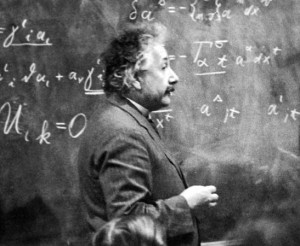“If I was asked to save the world in a single hour, I would spend 55 minutes identifying the problem and 5 minutes formulating a solution.” Einstein’s little quote illustrates an essential point to problem solving, identifying the problem is much more important than scrambling for an answer.
What I think Mister Einstein was trying to say is, the quality of the solution is going to be directly proportional to the quality of the question. Better questions precede better answers, in depth questions precede in depth answers, and accurate questions precede accurate answers. So if you want to find a good solution you must first formulate a good question.

How does one formulate a good question?
Rephrase the problem
Toyota executive asked his employees to brainstorm “ways to increase their productivity”. He got zero input. He then asked them to brainstorm “ways to make their job easier”. This time he got more suggestions than he could even use.
Words hold a lot of meaning. Even though both the phrases mean the same thing, one elicits a very different response. An easy trick is to use synonyms. You want to ‘increase your audience’. Replace ‘increase’ with ‘extend’, ‘spread’, ‘cover’ or ‘attract’. Notice how the problem changes.
Reword the problem several times, and don’t be too concerned with losing the meaning of the question.
Multiple perspectives
Looking at a situation with different eyes is going to provide instant insight to the problem. Say you want to ‘increase your audience’. Look at the situation from the audience perspective, look at it from your perspective, then try to look at it from an outside perspective (perhaps imagine being someone that neither writes nor reads your blog.)
Now try to imagine how different people might view your situation. How would a college professor see it, or a politician, a mechanic, or a Christian? I don’t know, imagine all the different angles you can.
Reverse the Problem
Take the problem from the heels and hang it upside down. If you are trying to win, look at all the things that will make you lose. If you are trying to ‘increase your audience’ look at all the things that are going to make you ‘lose your audience’.
Once you have some clear cut ways to lose, take those answers and reverse them. Now you have some clear cut ways to win.
This probably may seem like a convoluted way to go about things. But this method usually turns up some obvious answers that may have gone unnoticed otherwise.
Gather Facts
Investigate the problem, do a little research. Look at the circumstance and probe the problem for details, such as its origins or causes. Many times we are faced with problem that is just too vague. A little investigative research can clear that right up.
An example of a vague problem is when your spouse says “you never listen to me”. Now of course that is a hasty generalization. To hone in on the problem you must ask questions like, what does she mean? Eventually, you will find what she means to say is, “you do not look at me enough when I’m talking to you.” This problem is much easier to fix.